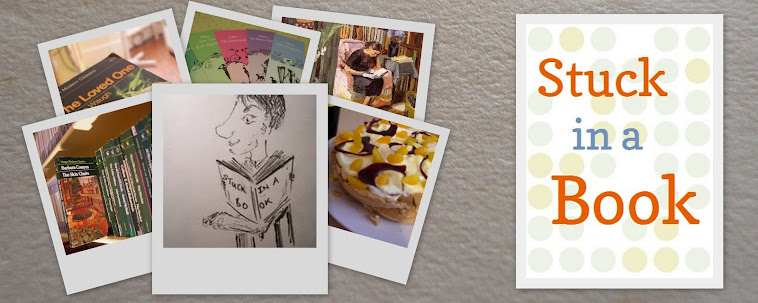Truth be told, there is only really one story which stands out in this collection, and that is the first one: 'Where Their Fire is not Quenched'. I'd read it a while ago, and hoped that the others in the collection would match up - sadly they didn't really. The atmosphere, characters, and writing were all good, but they often follow essentially the same premise: a ghost returns to clear up some unfinished business, usually romantic. I suppose that is as good a ghost story prototype as any, and Sinclair is careful always to incorporate some psychological angle, but 'Where Their Fire is not Quenched' is excitingly original by comparison. (Oh, and there is 'The Finding of the Absolute', which is a posthumous discussion about adultery and Kant... but that was mostly bizarre.)
The term 'uncanny' had only recently (four years earlier) been used as the title to an influential essay by Freud ('Das Unheimliche') and it is likely that Sinclair deliberately chose her title to connect with his, especially given her interest in psycho-analysis. But the relationship between sexuality and the supernatural is not hidden in 'Where Their Fire is not Quenched'.
The story concerns Harriott who, like her near-namesake Harriett Frean, misses out on an early chance at love. No further opportunities present themselves until, after her father's death, she embarks upon an affair with a married man, Oscar. They spend a fortnight together in the Hotel Saint Pierre, Paris, and the affair drags on... and on...
When Harriott wonders whether or not she could marry Oscar, she thinks 'Marriage would be the Hotel Saint Pierre all over again, without any possibility of escape.' Little does she realise the fate that awaits her after her death... Although she lives many years after the end of her affair, even becoming a deaconess, after her death it is Oscar she sees.She tried hard to believe that she was miserable because her love was purer and more spiritual than Oscar's; but all the time she knew perfectly well she had cried from pure boreom. She was in love with Oscar, and Oscar bored her. Oscar was in love with her, and she bored him. At close quarters, day in and day out, each was revealed to the other as an incredible bore.At the end of the second week she began to doubt whether she had ever been really in love with him.
The rest of the story is hauntingly surreal, and incredibly filmic. It would make a superb short animated feature, actually - think Tim Burton meets Salvador Dali. Harriott keeps escaping Oscar, running through past memories of a church, her village, her childhood home and garden... but every corner she turns, the rooms and streets rearrange themselves into the corridor of the Parisian hotel. Sinclair writes this so well, vividly and visually. I thought that Jean de Bosschere's illustration, which accompanies it, gives a good idea of what Sinclair was trying to convey:
Ineluctably Harriott is forced back to the scene of her loveless affair, overriding everything else she has done.
It is unpopular these days for a work of fiction to have a moral; the much-fated quality of 'openmindedness' has led to people being extremely closed-minded in this area. It was pretty unpopular for stories to have morals even in the 1920s, but Sinclair has dared to. The story is not so much a warning against adultery as a cry against sexual relationships where there is no love - as such I think the story is very resonant today, and chilling in ways that Gothicised tales of horror cannot be. It's a shame that the rest of Uncanny Stories is fairly pedestrian - entertaining and diverting enough, but never experimental. But I do recommend you track down 'Where Their Fire is not Quenched', in or out of this collection. In fact, you can read a pdf version here..."In the last death we shall be shut up in this room, behind that locked door, together. We shall life here together, for ever and ever, joined so fast that even God can't put us asunder. We shall be one flesh and one spirit, one sin repeated for ever, and ever; spirit loathing flesh, flesh loathing spirit; you and I loathing each other.""Why? Why?" she cried."Because that's all that's left us. That's what you made of love."


You know me, my general reaction to anything with ghosts in it is to run in the opposite direction. Still, I can't help but be intrigued by the combination of "a posthumous discussion about adultery and Kant", though at the same time I can easily imagine how that could create a very bizarre story. I will definitely read 'Where Their Fire is not Quenched' but not I think just this moment - I am not reading anything hosted on a site with the name www.horrormasters.com right before I go to bed. I do poorly enough with those kind of stories in the morning!
ReplyDeleteIf I can cope with it, I'm sure you can! I don't really like tension or horror - this was more an interesting exploration of character, and really innovative visual/spatial writing.
DeleteI'm a great fan of ghost stories, a member of two literary societies devoted to them, and I do agree with you about 'Where Their Fire is Not Quenched'. Another, much anthologised supernatural story by May Sinclair that I'd recommend is 'The Villa Desiree', originally published in her second collection, 'The Intercessors'. I know there's an easily obtainable, cheaply priced Wordsworth edition of 'Uncanny Stories', but it doesn't contain 'The Villa Desiree'.
ReplyDeleteI love the illustration; is that from the original edition?
I will have to hunt that one out! My copy of Uncanny Stories is the Wordsworth one - but the illustration is from the 2nd or 3rd edition, back in the 1920s.
Delete